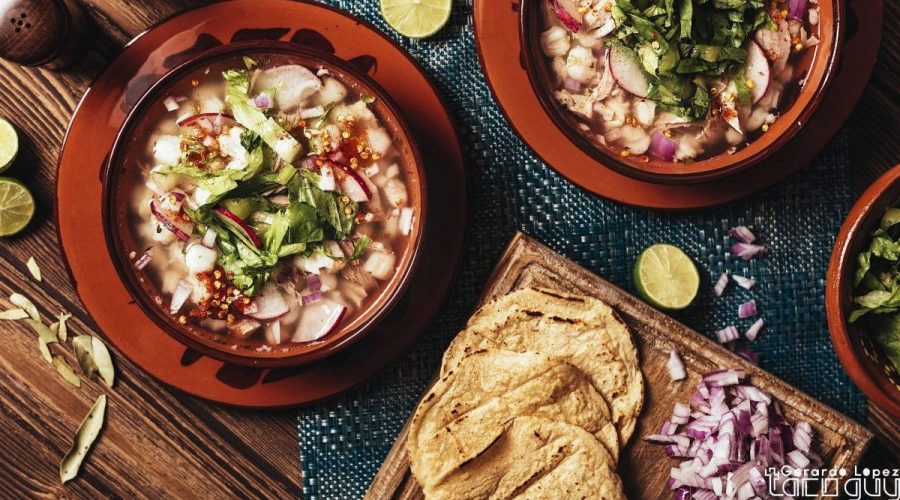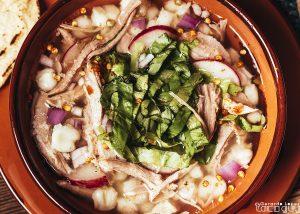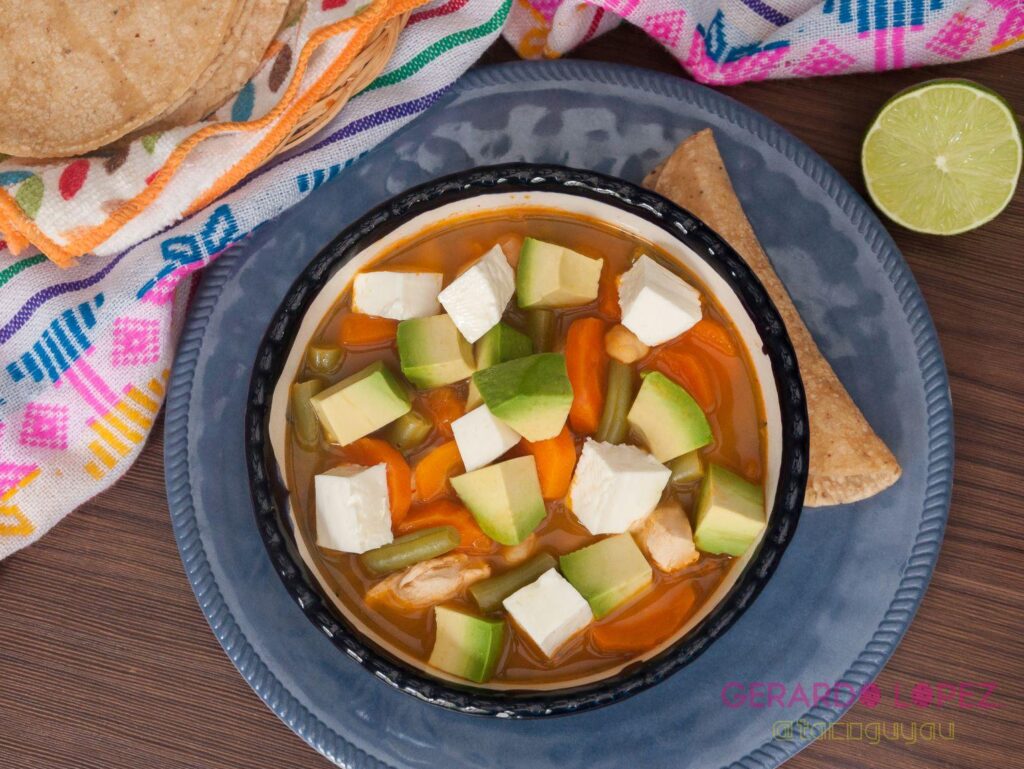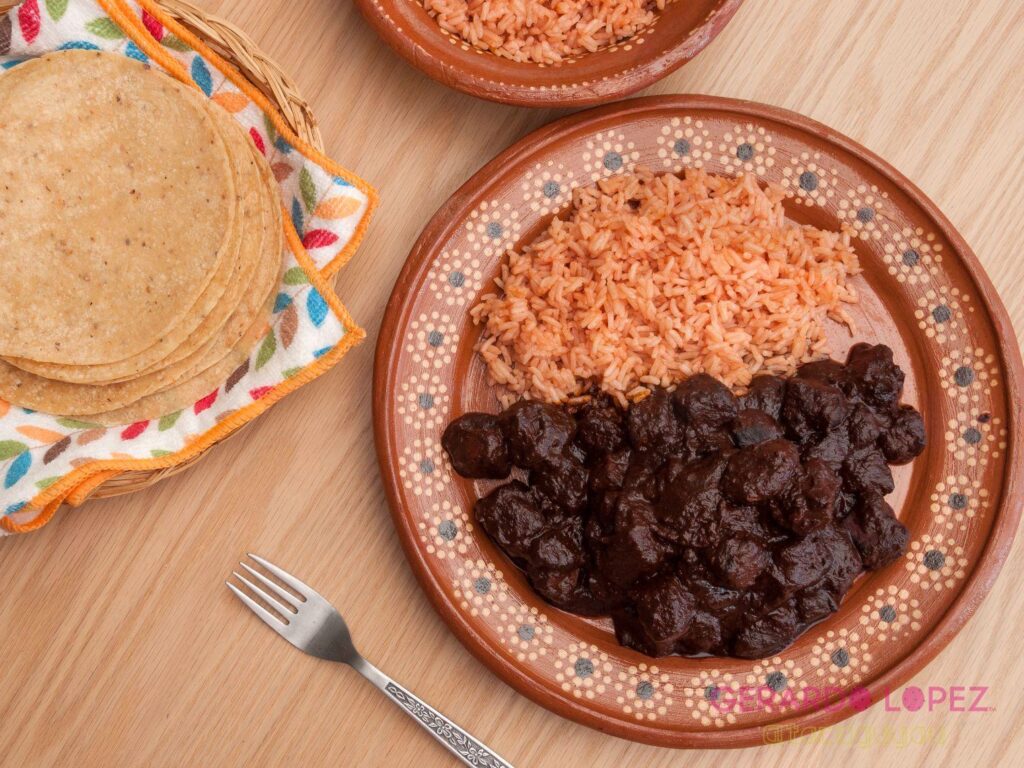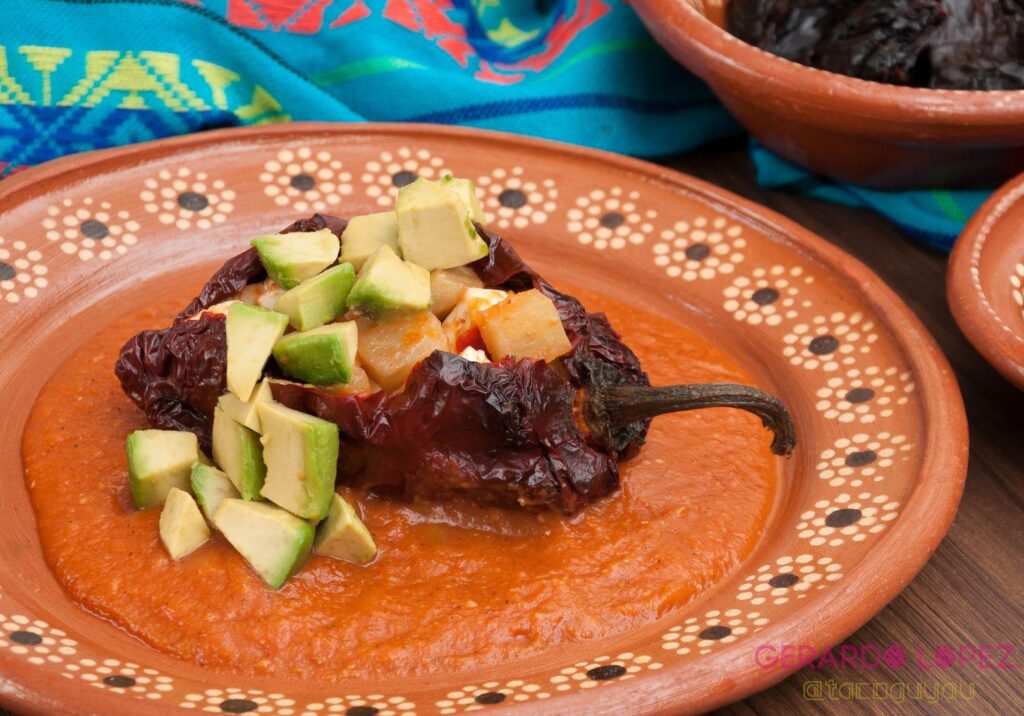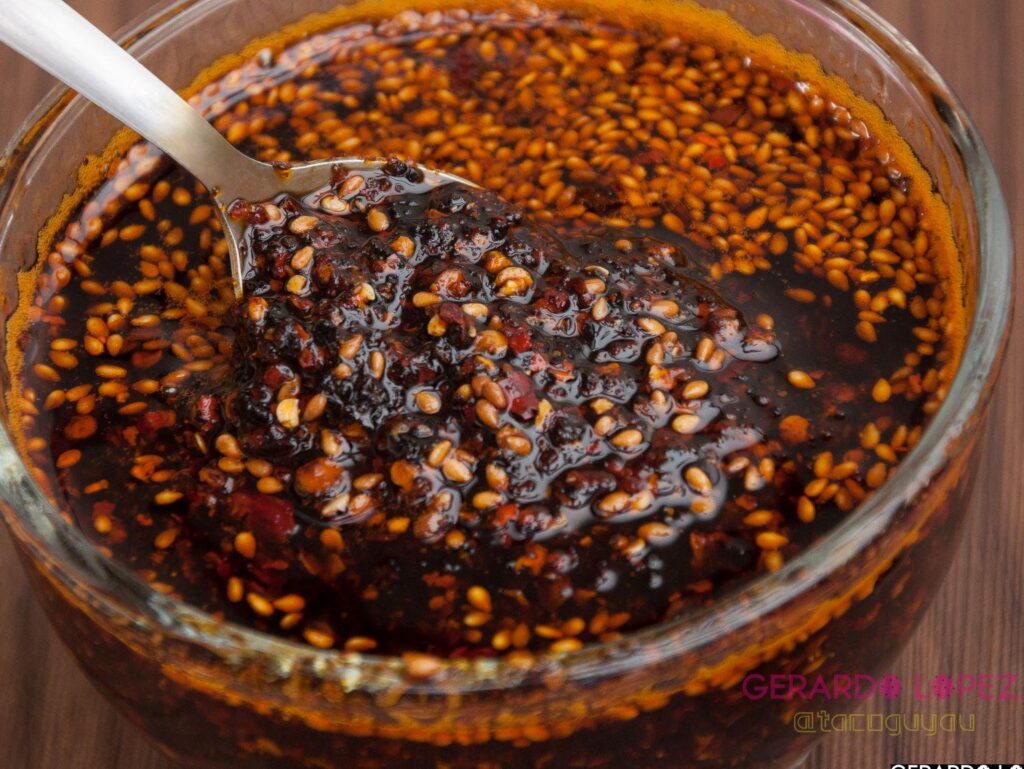At my parents’ house in Mexico, it was traditional to have pozole for Mexico’s Independence day and also during the celebrations leading into Chrismas – also known as ‘posadas’. It is a celebratory dish that brings family and friends together. It is also a personalised dish, everyone has their own quantities, order, and peculiarities on how the garnishes are applied.
I personally like using chili flakes and lime first, followed by the radish, onion, and coriander. I also like eating this dish with a tostada instead of a tortilla, but then there are some people that like to sink the tortilla in the bottom of the plate. There are people that like to add eggs, sardines, and just like tacos, the combinations are endless.
During the filming of This is Mexico, we visited one of the most popular ‘pozolerias’ in Mexico City. El Pozole de Moctezuma, is an institution in downtown Mexico city but people from all over Mexico come here to try the pozole. They have different pozoles from different regions of Mexico, but owner Jeronimo explained to us that their specialty is the green pozole from the estate of Guerrero. It was impressive to see all amount of ingredients and garnishes that go into this dish. Check it out on episode 6 of This is Mexico.
Apart from flavour, this national dish is also full of controversy. From the Spanish chronicles during the conquest of Mexico, we found that Mexicas, wrongly referred to as Aztecs, used to prepare this dish with human flesh. Given that human sacrifices did occur during this part of the history of ancient Mexico, it is not hard to believe this was the case. The Spaniards introduce pork to America and it is said that it was adopted as a replacement to human meat given its similarities in taste — a guess most of us will never be able to do a comparison
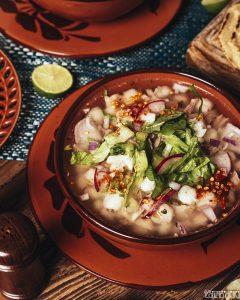
Pozole Blanco
Ingredients
- 1 kg of hominy drained and washed
- 1 kg of pork loin skirt or leg, deboned and cut in 5cms chunks
- 1 ½ ltr of chicken or beef stock
- 1 garlic clove
- 1 white onion peeled
- 1 bouquet garni made with 6 peppercorns 3 cloves, and 2 bay leaves
- Salt to taste
- 1 white or red onion finely chopped for garnish
- 6 radishes sliced for garnish
- Oregano preferably Mexican oregano for garnish
- arbol chili flakes or chili powder of preference for garnish
- 4 limes cut in wedges for garnish
- ½ lettuce finely chopped for garnish
- Tostadas baked or fried to serve
Instructions
- If hominy not cooked (dried corn), place it in a saucepan with 2 litres of water and cook until the corn blossoms and drain. This may take several hours, at least 2 hours.
- In a large saucepan add the stock, the pork chunks, the cooked hominy, garlic, and bouquet garni and cook in low heat until meat is fully cooked.
- Remove the garlic, onion, and bouquet garni. Add salt to taste.
- Serve hot in bowls and place the garnishes on a side plate or in the middle of the table for each person to prepare their own pozole.
Notes
- Hominy is the main element of this dish but if you have access to 'cacahuazintle corn' use that instead. It just means that you need to cook for longer.
- If you can't find hominy, a good substitute would be chickpeas but always try to find corn or hominy before resourcing to this option.
- Yes, you can use hot sauce instead of chili powder or flakes, but I personally prefer arbol chili flakes or powder.

